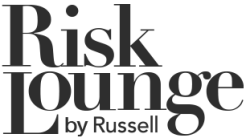
With many companies now spending hundred’s of thousands, if not millions, of dollars on “underwriting models”, it is not always clear the return the company is getting on its investment. Here Mat Maddocks discusses a simple approach to valuing models and how and where (re)insurers can get value for money.
“Models”
The term model, or modelling, is often used to mean a number of different things in the (re)insurance market. In general the term refers to a piece of software (either proprietary or built using a standard package such as Excel or Access) in which the real world is represented in a statistical framework to facilitate better understanding and to provide a reference structure for decision making. Specifically underwriting models, in their most basic form, attempt to estimate the claims that are likely to be paid under a (re)insurance arrangement and, more recently, the amount of capital required to accept the risk. For a model to add value to a company it must generally do one or more of the following three things: firstly allow the company to generate more income, secondly allow the company to reduce its costs, or thirdly enable legal or regulatory compliance with the relevant authority for the jurisdiction it operates in. We will look at each of these in turn and discuss how models can be used to gain maximum benefit from their use.
Income Generation
There are two main areas where models can, in theory, be used to generate additional income for a company. Firstly, and probably the most common, is when a (re)insurer is operating within a fixed capital environment and uses a model to understand its PML (probable maximum loss) rather than holding capital on a policy limits basis. To be done effectively the (re)insurer needs a portfolio view as well as an individual risk view to enable them to maximise the amount of business written against their capital base. For the model to be truly valuable it should be capable of estimating the PML for individual risks and estimating the correlation between risks across the portfolio. In doing this the (re)insurer can understand the tail distribution for their entire portfolio, which is often where the company’s capital position is derived.
Secondly where a model initially performs analysis at a market level (rather than or in addition to a (rein)insurers own portfolio) there is great value in identifying new opportunities where the (re)insurer has no exposure or where their representative share is below the level that they expect and/or are targeting. This level of market information can only be gathered and processed if the company have sufficient software in place to capture data at this level, and although time consuming can yield valuable results that can be used for targeted marketing and new business generation.
Cost Reduction
For all (re)insurance companies the area that can be mostly improved by models is the cost of claims incurred by the company. There are two stages in the level of sophistication to the approach that should be taken. Firstly the company should have software to enable it to estimate the amount of claims for each contract it underwrites. At a basic level this means the (re)insurer will not accept business at a loss ratio above it’s target, and it should therefore not (in theory) exceed the costs in it’s business plan.
Secondly, at a more advanced level, if the company has a sophisticated portfolio model it can optimise the premium-claim relationship and maximise it’s return for a given level of capital. Although complex and requiring a powerful computation engine the benefits to a (re)insurer from having their portfolio optimised are potentially huge compared to the cost of performing this analysis.
Regulatory Compliance
Solvency II now compels all (re)insurance companies to adopt a framework within which to model the level of capital required for the company to operate. The model should include elements for all the types of risks faced by the company: underwriting risk, market risk, credit risk, and operational risk. Although there is intrinsic value in having a model that satisfies the regulator it’s important that (re)insurers focus on gaining maximum value from the approach by ensuring that any development allows additional value, as discussed above, to be derived from the model.
Conclusion
In conclusion it is important to always focus on the value that can be gained from modelling, and not just participate in modelling for modelling sake. When undertaking a project or software purchase a (re)insurer should look beyond the features and functionality of the model and ask the question “does this model assist me in generating additional income, and can it be used to reduce my costs”.





